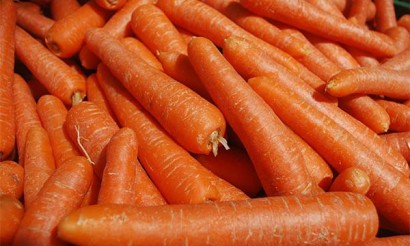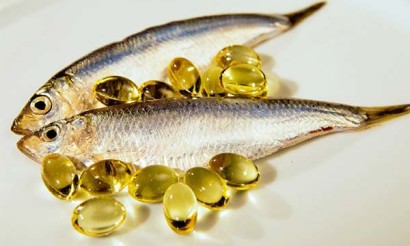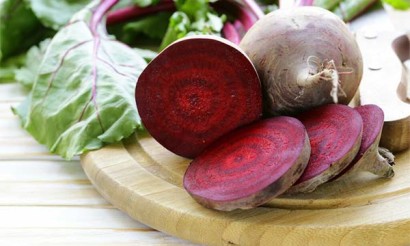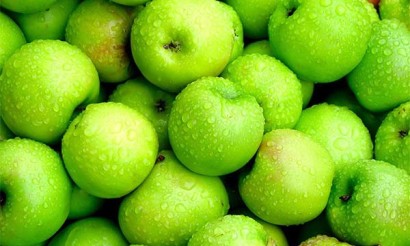Rice during breastfeeding: the benefits and harms
During the period when the child is still small, a woman should pay more attention not only to their health, but also to the diet. The thing is that the baby eats breast milk, the composition of which varies depending on what the mother eats. Pediatricians recommend in the first months of a child's life to follow a strict diet and introduce various products gradually, including rice.
- Can I Eat Rice When Breastfeeding
- The first month
- The second month
- How to consume Rice
- How much rice a day?
- Rice consumption at night and on an empty stomach.
- The benefits of rice when breastfeeding
- Which types of rice are best for breastfeeding?
- White
- Red
- Black
- Wild
- Brown
- What are the dangers of rice during lactation?
- When rice is contraindicated
- How to Introduce Rice into a Nursing Mother's Food
- How to Choose Rice
- Recipes of rice cooking.
- Milk porridge
- Pudding
- Soup
Can Rice Be Eaten While Breastfeeding
Rice in the menu of a mother who feeds her baby with breast milk, should be a must. It contains many useful substances and has a beneficial effect on the digestive system. But use it when breastfeeding should be correct, so as not to provoke the emergence of unpleasant symptoms in the newborn.
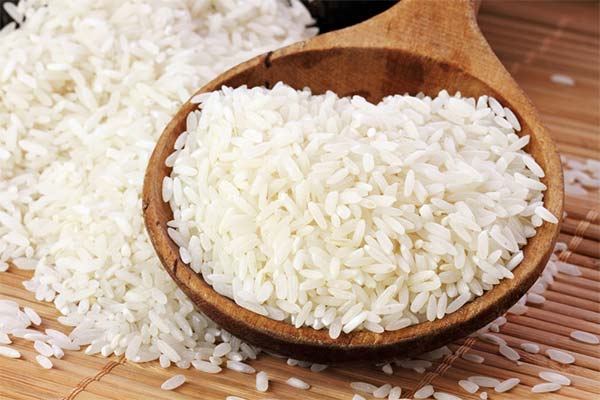
In the first month
Immediately after birth, the digestive tract of the newborn is not yet fully mature and is not able to digest complex compounds. That is why it is important for the mother in this period to stick to a strict diet and not to introduce heavy foods into her diet.
Rice has a special effect on the stomach, and the baby may suffer from colic, bloating, and even constipation. That is why in the first month it is better to refuse to eat rice in any form.
In the second month
An infant grows and develops rapidly. His digestive system to the second month of life is almost fully mature and begins to adapt to other conditions. But experts advise even in this period to treat your diet carefully and exclude the use of rice.
When the baby is two months old, you can try rice broth, especially if the mother suffers from digestive system disorders. If the baby has no unpleasant symptoms in the form of colic or bloating, the broth can be used in small amounts no more than once a week.
Rice in the diet of the mother can be introduced in the third or fourth month. By this time, the newborn's stomach is strong enough and is able to digest more complex compounds.
How to Eat Rice Properly
In order to reduce the negative impact of the product on the body of the infant, you should follow a number of simple rules when eating rice:
- The product can be eaten no more than a couple of times a week, starting from the 3-4th month after childbirth.
- After the first use, it is important to monitor the baby's reaction for two days. If there are no negative symptoms, rice can be introduced into your weekly diet.
- At first, it is recommended to eat rice without additives. The best option would be porridge with water. This will help determine the cause of the unpleasant symptoms. If there are no symptoms after 3-4 weeks, vegetables or fruits can be added to the dish one at a time. This way you can easily identify what is causing the allergic reaction in the baby and immediately exclude the product.
- When colic and other symptoms appear, the amount of grits should be reduced. In cases where unpleasant signs do not go away, rice should be completely removed from the diet. You can try it again after 1-2 months.
- Specialists recommend the use of wild, red, and long-grain and steamed varieties of rice for preparing dishes with breastfeeding.
- Rice should be checked and rinsed well before cooking.
- It is best to begin with broth or soup. Water and vegetables will help reduce the fixing effect of the product.
- When cooking rice, you should not use spices, as well as garlic and onions.
Following these simple rules will reduce the risk of your child having unpleasant symptoms.
How much you can eat per day
Start to introduce cereal into your diet a nursing mother should be a small portion. The norm at first should not exceed 50 g.
Gradually, the single norm can increase to 150 g per day. But it is important to remember that the use of rice should not exceed 3 times a week, carefully watching the well-being of the baby.
Can you eat rice at bedtime and on an empty stomach?
It is not recommended to eat rice at night. The fact is that this product is heavy for the stomach and has a hardening effect. In addition, the consumption of cereal before bedtime can cause colic in the baby, resulting in a restless sleep.
It is possible to eat the product on an empty stomach, as it has many useful substances, for a long time quenches the feeling of hunger and energizes the body. Thus, rice would be a great breakfast option for a breastfeeding woman, as it helps to gain strength.
The benefits of rice when breastfeeding
Experts have established that the life expectancy of the Japanese is longer as a result of the fact that in their diet there is rice in significant enough quantities. The product contains many useful trace elements and vitamins, which has a beneficial effect on the body.
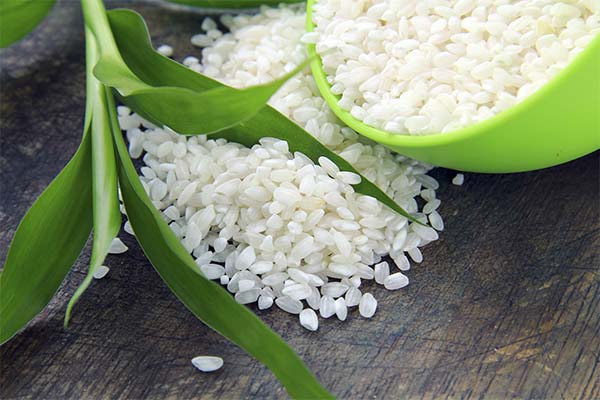
The beneficial properties of rice include:
- Maintaining the process of digestion and the work of the gastrointestinal tract due to the presence of vitamins B6, PP.
- Normalization of cholesterol levels in the blood. It accumulates on the vascular walls, which over time leads to poor circulation and the occurrence of strokes, heart attacks. Such a property is achieved due to the content of vitamin B1.
- Improvement of brain performance. The ingredients in the rice help support not only brain function, but also the nervous system.
- Maintaining natural beauty. Rice contains riboflavin. It is a vitamin that is essential for the growth and beauty of hair, nail plates and skin. Thanks to it, the skin acquires a natural shade and the hair and nails become strong.
- Improvement of concentration and memory due to the presence of choline in sufficient quantities. In addition, the vitamin helps to strengthen the nervous system and raise the mood.
- Restoration of the hormonal background. After childbirth, breastfeeding changes the hormonal background, which provokes not only mood swings, but also the appearance of acne and pimples.
- Normalization of blood circulation and maintenance of the cardiovascular system. The consumption of rice will help to reduce the risk of heart disease, as the product contains folic acid. It also has a positive effect on the nervous system of not only the mother, but also the baby.
- Increased immunity and stress resistance. A woman's body after childbirth is prone to various diseases, as the defenses are significantly weakened. Rice will help support the immune system and cope with stress due to the presence of vitamin E in its composition. The substance also helps to slow down the aging process.
- Prevent cardiac dysfunction. Rice contains magnesium, which is essential for the cardiovascular system to function properly.
- Strengthening bone tissue. The product also contains calcium, which is the main building material of bone tissue.
- Prevention of anemia. During pregnancy, many women suffer from such a disorder as anemia. It appears in the form of malaise, weakness, darkening of the eyes at sudden movements. In some cases there is also nausea. Rice also contains iron, which is necessary for the process of hematopoiesis.
- It improves kidney and liver function. During pregnancy, a woman's body is under great strain. Changes also affect the internal organs. Quite often the liver and kidneys suffer. Rice will help to normalize their work, because it contains silicon.
- Skin regeneration, wound healing. Thanks to the consumption of rice, the process of regeneration of soft tissues is activated, which contributes to the rapid healing of wounds.
- Decrease in blood pressure. Changes in blood pressure is a frequent problem after childbirth. Regular consumption of rice, even in small quantities, helps to lower blood pressure and normalize the general condition.
- Support of the thyroid gland. The product contains iodine, which is required for normal functioning of the endocrine system. As a result, the hormonal background is stabilized, hair loss stops, mood and general well-being improve.
- Diarrhea prevention. Rice is known for its fixing effect, which helps to eliminate such a problem as digestive disorders.
- Prevention of overeating, which is most often the cause of gaining excess weight. Rice even in small quantities helps to satisfy hunger for a long time.
The benefits of rice during breastfeeding also lies in its ability to stimulate milk production and improve lactation. That is why it is useful for breastfeeding mothers. But before introducing the product into the diet, you should consult your pediatrician.
Which rice is better for breastfeeding?
Today, on the shelves of supermarkets you can find not only the usual white rice. There are many varieties. Each of them differs not only in appearance, but also in their properties.
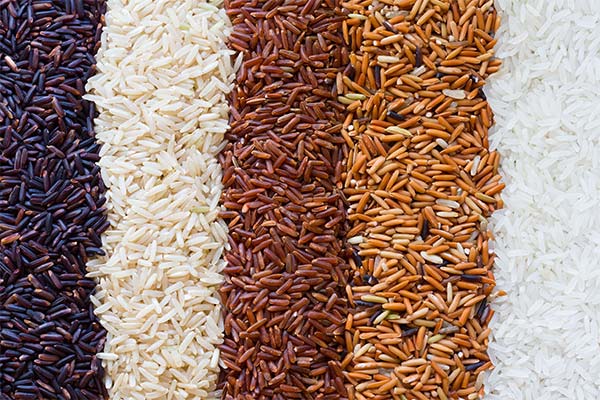
White
This is the rice that everyone is used to, and is often sold steamed. There is also long-grain or round-grain. Cereal in this case differs in size and cooking time. White rice is always ground. This variety is the most common. The grains are even and smooth. Cooking time, depending on the shape of the grain, varies between 10-15 minutes.
The composition of this product is dominated by starch, unlike other varieties of rice. It also has less minerals and vitamins. This is due to the fact that the product is deeply processed.
The advantages of groats are low cost, ease of preparation, long shelf life and availability. White rice can be found in any grocery store. It is used to prepare both soups and second courses and salads.
Red
This variety of rice came to Europe from Thailand. But today it is grown in France. Not so long ago, red rice was considered a weed, but now you can try it in the best restaurants.
The red variety is known for its nut-like flavor. The product contains a large number of nutrients and is ideal for dietary meals. The disadvantages of red rice are inaccessibility and high cost.
Black
This variety is also known as the Tibetan variety. It grows in Tibet and is popular there. It also contains special substances that make black rice an aphrodisiac.
In Tibet, black rice is also known by the name "forbidden". It originated in Ancient China, because dishes from this product were served exclusively to the emperors.
Black rice is more often used in combination with white rice. Firstly, the dish looks more spectacular with this combination. Secondly, the use of both varieties allows to reduce the cost of the dish. It is also added to various salads.
Black groats are among the most expensive varieties, but are distinguished by the presence of a large number of nutrients, trace elements and vitamins.
Wild
The variety is characterized by low calories and a pleasant taste. Wild rice promotes fast and prolonged satiety. It grows exclusively in North America.
The product contains a huge amount of vitamins and minerals, is rich in fiber and protein, and is used to prepare the first and second dishes.
The drawback is its high price. It is due not only to its balanced composition, but also to the fact that wild rice grows only in certain conditions.
Brown
In its composition, it is superior to white rice, as it is not deeply processed. On the surface of the grains remains a shell, which gives it its color.
Brown rice is used for dietary nutrition, and in small quantities can also be consumed for diabetes.
Breastfeeding is beneficial for varieties that are not deeply processed. But they are expensive enough to use regularly. The ideal option would be brown rice. White rice can also be used to prepare first and second dishes, as it is more affordable.
What are the dangers of rice in lactation
Despite the fact that rice has many useful properties and has a positive effect on the body of a woman, it can also be dangerous.
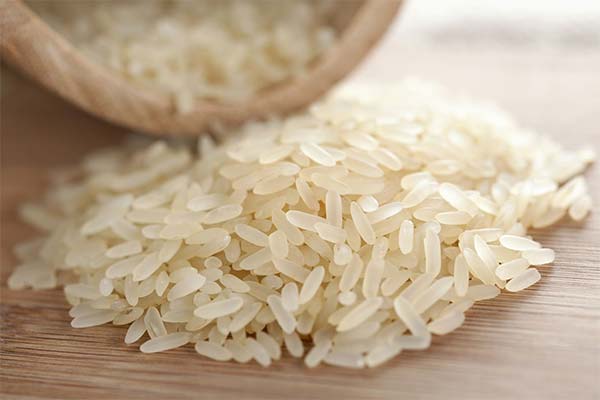
First of all, the use of the product in large quantities, especially when breastfeeding the baby, will cause long-term constipation. In this case, the problem occurs not only to the mother, but also to the baby. This is due to the fact that rice has a coating effect on the walls of the gastrointestinal tract.
In addition, regular consumption of rice in large quantities leads to the development of atherosclerosis. The disease occurs when the water-salt metabolism is disturbed. It is characterized by the occurrence of fatty deposits on the vascular walls, which provokes a disruption of the digestive process.
Such disadvantages are unique to white rice. Other varieties do not have a firming effect.
When rice is contraindicated
Rice in lactation belongs to the permitted products, but, despite this, it is not always possible to eat it. The pediatrician may limit the consumption of the product in the following cases:
- Childbirth by cesarean section. Such children require more attention to their health.
- The presence of excess weight.
- Frequent constipation or colic in the newborn.
- Altered stool consistency in both the baby and the mother.
Rice causes allergies in the baby in exceptional cases. When introducing it into the diet, the mother should pay more attention not to how the baby feels, but to its stool. The product provokes intestinal gas accumulation, colic, flatulence and constipation in newborns.
Women should also remember that rice can increase blood pressure, increase the risk of diabetes, and cause kidney or bladder stones. In addition, rice provokes the occurrence of atherosclerosis.
If you are breastfeeding, you should limit your intake of rice. It is better to choose brown rice, because it has a large amount of fiber. It is important not to exceed the permitted norm of the product.
What is the right way to introduce rice into the diet of a nursing mother
To avoid negative consequences after eating rice, the mother should follow a number of rules. Experts recommend:
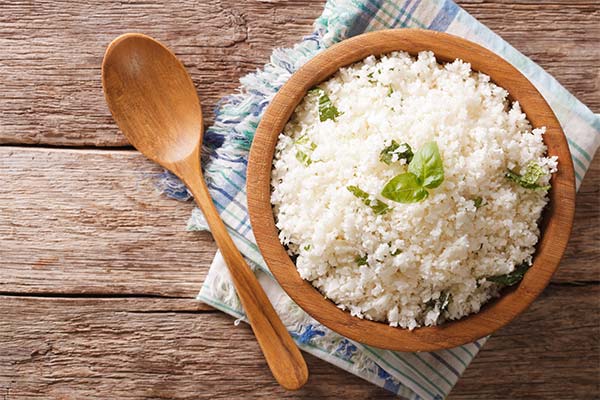
- Introduce the product in her diet to the mother only after the baby is three months old. By this time, the baby's digestive system is strong enough and is able to digest complex compounds.
- You do not need to eat rice very often. It is enough to eat it up to 3 times a week in small portions. Gradually the child's body will get used to the new product.
- For the first time after the consumption of rice, it is important not to observe the appearance of allergic reactions in the newborn, because the product in exceptional cases is the cause of its manifestation. It is necessary to monitor the child's well-being. If colic, anxiety and other unpleasant symptoms occur, rice should be removed from the diet. It can be reintroduced after 1-2 months.
- For cooking rice dishes during the period when the baby is fed with breast milk, it is better to use brown or wild. They have no negative impact on the digestive system, and their composition contains more valuable substances for the body.
- Rice should be rinsed several times under running water before cooking. This is due to the fact that during storage groats are treated with a special compound, which prolongs their shelf life. It can have a negative effect on the body.
- When cooking a dish, you should not use hot spices, garlic. Specialists advise to exclude them, as spices worsen the quality and taste of breast milk, which can cause the baby to refuse to eat.
- For the first time, vegetable soup with rice will do. Carrots and water will weaken the fixing effect.
- Make the dish tastier and healthier by adding vegetables, fish, or meat. But they should also be introduced gradually.
Observance of all the rules will help the mother to eliminate the appearance of unpleasant symptoms in the child and reduce the risk of their occurrence in herself.
How to choose rice
When breastfeeding, it is important for a woman not only to properly introduce the product into the diet, but also to buy a quality product. Often rice is treated with special compounds during storage, which can cause poisoning or other problems for the newborn.
First of all, when choosing, you should pay attention to the packaging. It should have a sign of GOST. This means that the rice is produced according to all the recommendations of Rospotrebnadzor. You should choose a product made as early as possible.
Inside the package must be free of debris. Cereal grains should be the same size, shape and color.
Pour cool boiling water on cereals to test the quality of the purchased product. If the rice is of good quality, it will swell. It is safe to eat without fear. But in cases where grains fall apart, acquire a mushy consistency, then such a product should not be consumed. Most often it indicates that the groats have been chemically treated.
When choosing rice, you should also pay attention to the baby's stool. When it is frequent and liquid, simple rice porridge boiled in water or casserole will do. In cases where a child is constipated, steamed, slightly undercooked rice will do. It is recommended that vegetables or fruit be added to the porridge.
Recipes for Rice
During the period when the baby is fed with breast milk, it is important for the mother to pay more attention to her diet. Rice can be eaten, but not in all dishes. You will have to give up pilaf. This is because it contains a lot of spices and vegetable oil. When breastfeeding, the following dishes can be prepared:
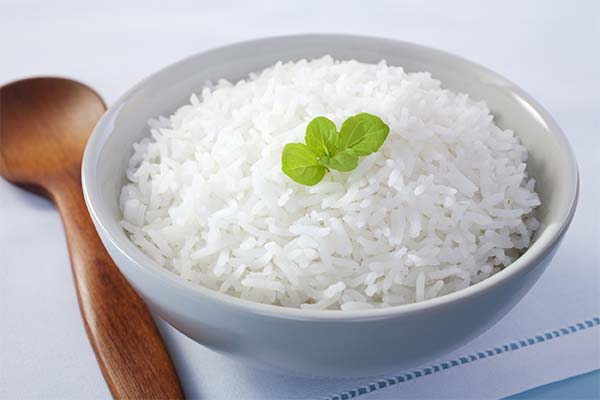
Porridge with milk
It can be eaten if the newborn does not have an allergy to milk or lactose intolerance. It is easy enough to prepare such a dish. You will need a glass of rice and 2 cups of milk. Rice is washed, poured into a saucepan and poured with milk. Cook over low heat until fully cooked. Before serving, add a small amount of butter and sugar. Over time, you can add apple, pear and other fruits to the porridge.
Pudding
This dish is not only healthy, but also very tasty. To prepare the pudding, you need to take a glass of rice, 2 cups of milk, a couple of eggs, 2 large spoons of sugar, raisins to taste. Rice is washed and put to boil over low heat for 12 minutes. Then drain the rest of the water, pour hot milk over the rice and salt it. Cook it all for half an hour. At the end of cooking add granulated sugar, eggs. Stir everything, put into greased pastry and put it into stove. Serve with fruit sauce.
Soup
Excellent for lunch. To prepare it you will need a quarter of a cup of rice, 3 potatoes, 1 pc. carrot and onion, vegetable oil and salt to taste. Peel carrots and onions, chop, grate and fry. Potatoes also peel, cut into cubes, pour into water. After everything comes to a boil, add pre-washed rice, fried vegetables. Serve with fresh herbs.
Such dishes when breastfeeding will help to eliminate the occurrence of adverse effects in the child. The amount of rice in each dish is enough to saturate the body of the mother and will not cause the newborn colic, flatulence, bloating or other symptoms.
Eating during the breastfeeding period, the mother needs to eat properly and with caution. This is due to the fact that in milk penetrates all the substances that the woman consumes. Incorrect nutrition will provoke many unpleasant consequences for the baby, including gastrointestinal disorders, allergies. There is rice when breastfeeding is possible and necessary. But care should be taken not to exceed the permitted norms. This is the only way to avoid a lot of trouble and keep your baby healthy. It is important to remember that before introducing rice into the diet, it is necessary to consult a pediatrician.
«Important: All information on this site is provided solely for introductory purposes only. Before applying any recommendations, consult a specialist. health care professional before using any of the recommendations. Neither the editors nor the authors shall be liable for any possible harm caused by materials."



